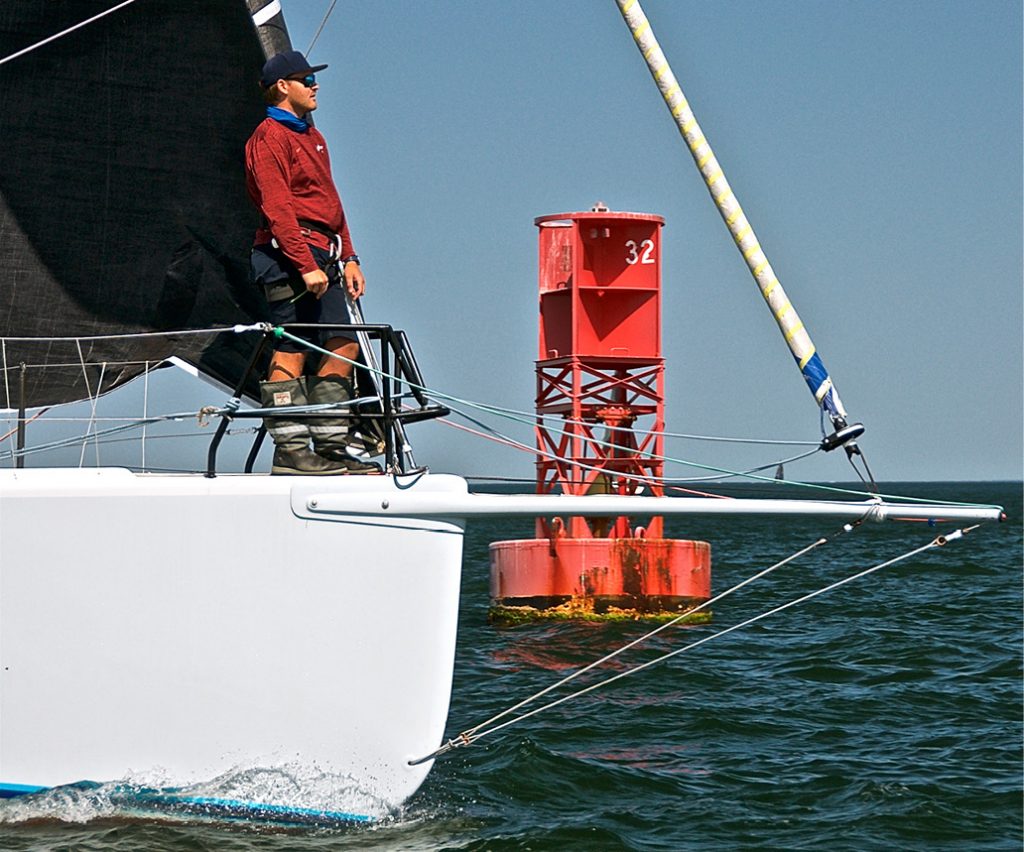No matter how skilled you are, it’s impossible to do every job perfectly while you are racing. For example, you can’t watch your telltales when you’re looking at the waves. You can’t always sail on the lifted tack and cover the boats behind you at the same time.
One thing that makes sailing fun and unique is that there is so much to think about. Since you can’t do everything at once, you must make choices about what you will and won’t do. And it’s the quality of these decisions that separates the top sailors from the rest.
How do sailors make wise decisions? In my experience, the key is knowing how to set good priorities. When you prioritize, you identify the factors that are most important for success at any moment. And you choose the areas to which you will give your limited attention.
The best sailors almost always seem to know what’s important. Their priorities are often a result of intuition, and they’re not afraid to develop new priorities when a) they realize their current priorities are not working; or b) the wind conditions or race situation change.
Even if you aren’t among the world’s best sailors, it’s still critical to set priorities, and this is not very hard to do. You just have to make an effort to think consciously about all your options and which ones will give you the highest probability of success.

Most big boats put someone on the bow during the start because a) it’s hard to see other boats through an overlapping genoa, and b) it’s hard to judge the position of the bow when you’re all the way aft. This person’s job is to help the helmsperson avoid other boats and, during the final approach, to signal how far away the boat is from the line. © Rick Bannerot/OntheFlyPhoto.net
In my experience, the process of prioritizing involves about five different steps. While these steps are all necessary for coming up with good priorities, you don’t have to go through every step for every decision you must make. Many good sailors do these things intuitively.
Define your goals. Before you set specific priorities, you have to look at the big picture. For example, let’s say you’re leading a regatta going into the last race. Your goal for the first beat of that race might be to round the windward mark in the top ten without taking any significant risks. By rounding in the top ten, you’ll have a great chance to maintain your series lead; at the same time, you want to be sure to avoid taking any chances like breaking a rule or sailing to the wrong side of the fleet.
Think and look ahead. In order to set good priorities, you need some thinking time. One big mistake many sailors make is allowing themselves to get into situations where they must make instant decisions that they haven’t thought about.
Gather information. In order to set effective priorities, you must have an accurate picture of your situation. Consider the port-starboard crossing described above. Before I decide what to do in that situation, I would want to have answers to all or most of the following questions: Are we lifted or headed? Do we like the left or right side of the beat? Which layline is closer? Are we in a position where we can lee-bow the other boat? Are there any other boats that might affect what we do?
Identify your options. Before you choose your priorities, it’s good to get all your possible options on the table. For example, let’s say you are racing upwind on port tack and you’re converging with a starboard tacker that you’re not sure you can cross. What’s the range of actions you could take?
You have four basic choices: 1) You could bear off and pass behind the other boat; 2) You could try to cross in front of the other boat; 3) You could tack into a close lee-bow position; or 4) You could tack farther to leeward of the other boat. This brainstorm of possibilities will help you take the next step.
Prioritize! Once you’ve identified your goals, gathered important information, and brainstormed options, you’re ready to set priorities. In the situation described above, here are the priorities you might have when you converge with a starboard tacker on the first beat (in order of importance):
1) Avoid breaking a rule.
2) Protect the left side.
3) Force the other boat to go right if possible. ■
This article originally appeared in David Dellenbaugh’s Speed & Smarts (SpeedandSmarts.com).



